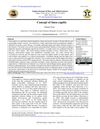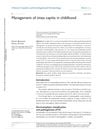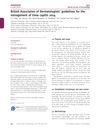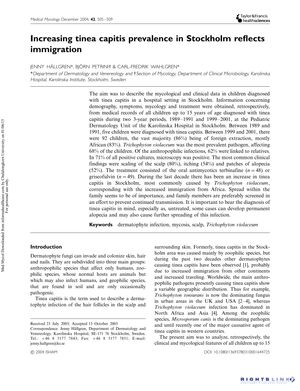TLDR The rise in tinea capitis cases in Stockholm is linked to increased African immigration.
The study aimed to describe the mycological and clinical data of children diagnosed with tinea capitis at the Karolinska Hospital in Stockholm during two periods, 1989-1991 and 1999-2001. The number of diagnosed cases increased from 5 to 92, with 86% of the latter group being of foreign extraction, predominantly African. Trichophyton violaceum was the most prevalent pathogen, affecting 68% of the children. Common symptoms included scalp scaling (80%), itching (54%), and patches of alopecia (52%). Treatment involved oral antimycotics terbinafine or griseofulvin. The increase in tinea capitis cases correlated with increased immigration from Africa, and family screening was recommended to prevent transmission. Untreated cases could lead to permanent alopecia and further spread of the infection.
46 citations
,
January 2002 in “Paediatric drugs” Tinea capitis, a scalp fungal infection in children, is best treated with newer antifungal agents for shorter periods.
 October 2022 in “Gadua Journal of Pure and Allied Science”
October 2022 in “Gadua Journal of Pure and Allied Science” Terbinafine is the most effective treatment for tinea capitis, a scalp infection often confused with other conditions.
1 citations
,
January 2024 in “Journal of clinical medicine” Early recognition and treatment of tinea capitis are crucial to prevent severe scalp issues and prolonged therapy.
 38 citations
,
July 2010 in “Clinical, cosmetic and investigational dermatology”
38 citations
,
July 2010 in “Clinical, cosmetic and investigational dermatology” To treat tinea capitis in children, oral antifungal medication is necessary, with newer drugs offering shorter treatment times than the traditional griseofulvin.
 June 2018 in “The Medical Journal of Cairo University/The Medical Journal of Cairo University”
June 2018 in “The Medical Journal of Cairo University/The Medical Journal of Cairo University” Dermoscopy can quickly and reliably distinguish Tinea Capitis from Alopecia Areata by identifying specific hair patterns.
 156 citations
,
September 2014 in “British journal of dermatology/British journal of dermatology, Supplement”
156 citations
,
September 2014 in “British journal of dermatology/British journal of dermatology, Supplement” Accurate diagnosis and effective oral treatment are key to managing tinea capitis and preventing its spread.




